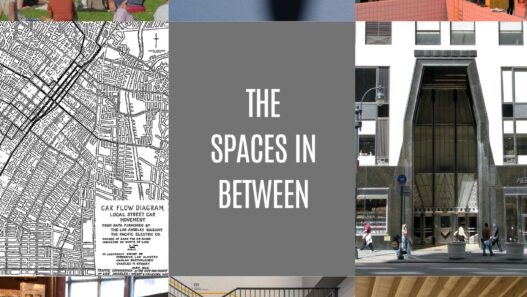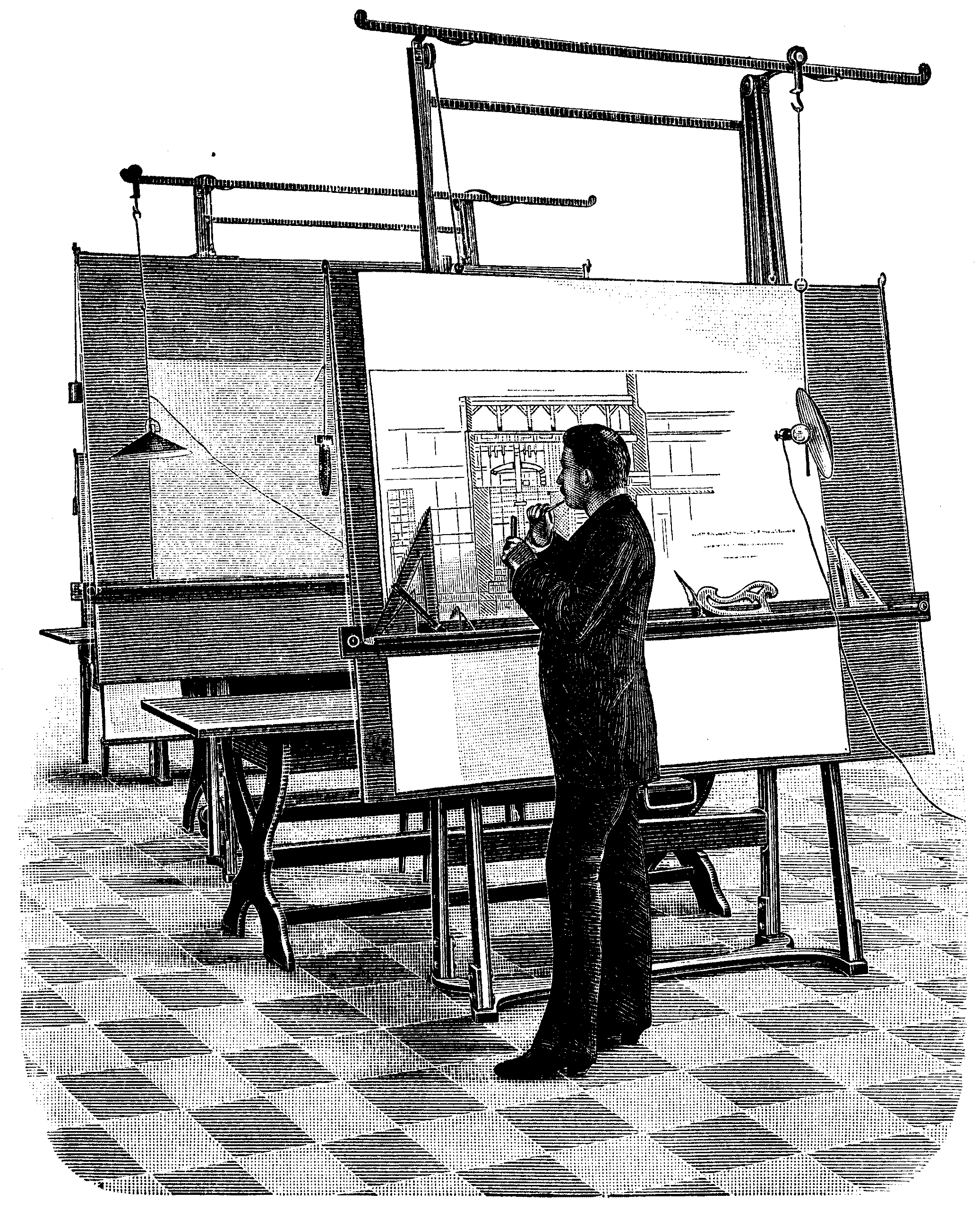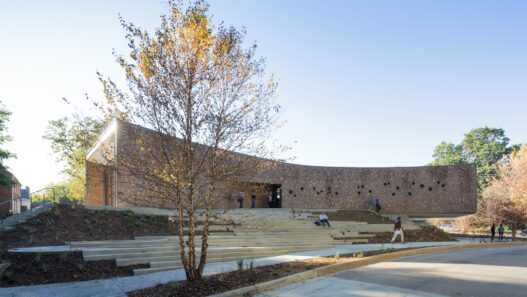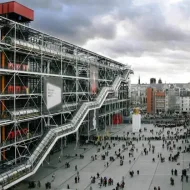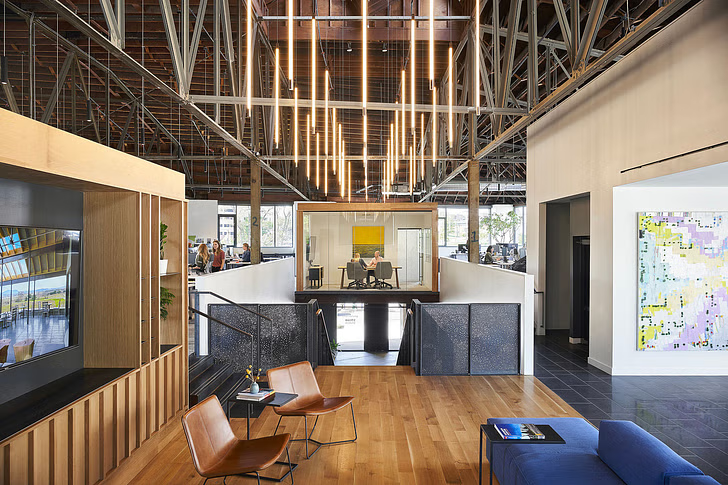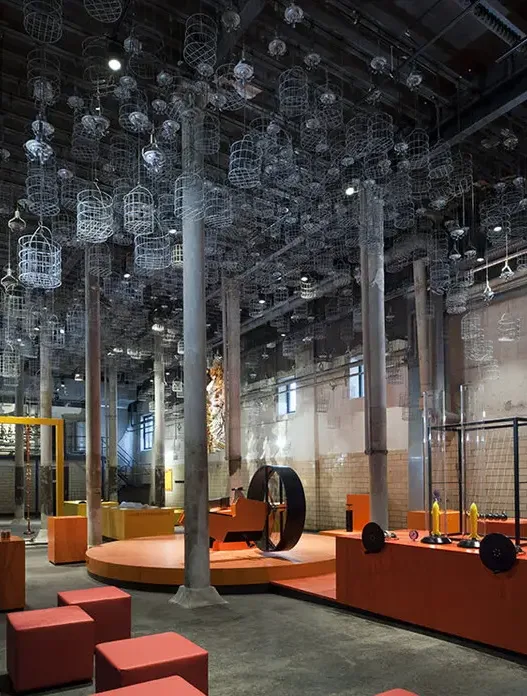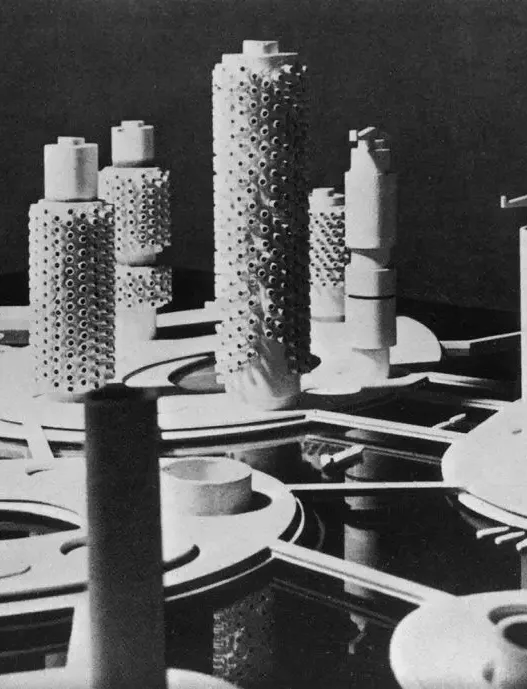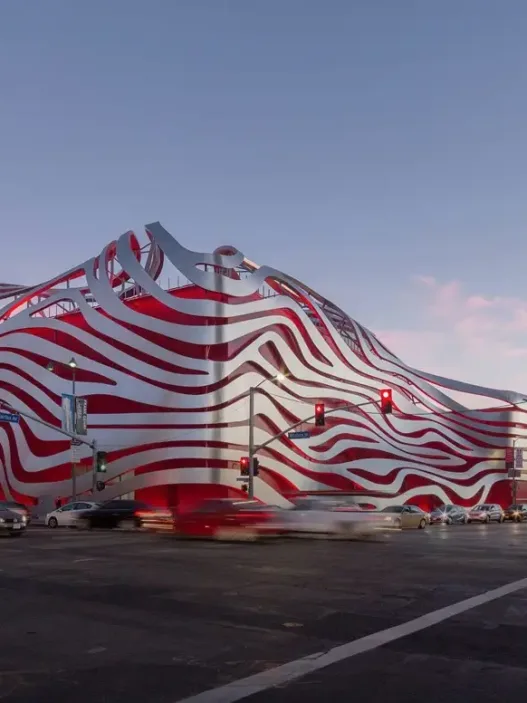The 20th century was a transformative period for architecture, marked by groundbreaking ideas, innovative materials and changing social values. As the world grappled with the effects of two world wars, rapid industrialisation and the rise of new ideologies, architecture evolved to reflect these changes. From the bold lines of modernism to the intricate details of postmodernism, each movement told the story of its time, responding to both technological advances and cultural shifts.

Defining Architecture in the 20th Century
20th century architecture can be defined as a dynamic field that constantly adapts to new ideas and technologies. Unlike the rigid styles of previous centuries, 20th century architecture embraced experimentation and diversity. It became a vehicle for expressing the hopes and concerns of society. Architects began to see their work not just as buildings, but as cultural artefacts that could influence social behaviour and reflect collective identity. This period witnessed the emergence of different styles, each characterised by specific philosophies and aesthetics, which collectively contributed to a rich architectural narrative.
Main Characteristics of Modern Architecture
Modern architecture emerged as a reaction against the ornate styles of the 19th century. Its main characteristics include minimalism, functionalism and the rejection of historical references. Architects such as Le Corbusier and Ludwig Mies van der Rohe championed the idea that form should follow function, leading to buildings that prioritised practicality over decoration. Large glass windows, open floor plans and the use of industrial materials such as steel and concrete became hallmarks of this style. This architectural movement endeavoured to create spaces that were not only efficient but also democratic and reflected the changing social fabric of the time.
The Impact of Technology on Design
The 20th century witnessed unprecedented technological advances that significantly influenced architectural design. The development of new materials such as reinforced concrete and lightweight steel allowed architects to push the boundaries of construction. Skyscrapers began to reach new heights, symbolising economic power and ambition. In addition, engineering advances facilitated the design of complex structures such as the Sydney Opera House and the Guggenheim Museum in New York. These innovations did not only change aesthetics; they also changed the way buildings were designed and constructed, leading to more sustainable practices and energy-efficient designs in later years.
Cultural Changes and Architectural Responses
As society evolved, the role of architecture in reflecting cultural changes also changed. Following the First and Second World Wars, a sense of urgency for renewal and hope emerged. Movements such as Brutalism emerged, characterised by raw concrete and austere forms, symbolising strength and durability. In contrast, the rise of consumer culture in the second half of the century gave birth to Postmodernism, which embraced eclecticism and historical references. This change emphasised the desire for individuality and the celebration of diversity. Architects responded to these cultural movements by designing spaces that coincided with the desires and identities of the public, further blurring the lines between architecture and art.
Overview of Major Architectural Movements
Throughout the 20th century, various architectural movements emerged, each contributing to the evolution of design. Modernism, with its emphasis on simplicity and functionality, laid the foundation for subsequent styles. As the century progressed, movements such as Brutalism and Postmodernism challenged and redefined architectural norms. Each movement not only changed the physical environment, but also influenced how people interacted with space and each other. The rise and fall of these movements illustrate the constant dialogue between architecture and society, revealing how design can both shape and be shaped by the world around us.
In sum, the 20th century was a rich tapestry of architectural innovation influenced by technology, culture and the ever-evolving human experience. Each movement provided a unique response to the challenges and aspirations of its time, leaving a lasting legacy that continues to inform contemporary architecture today.
# The Rise and Fall of Design Movements in the 20th Century
Modernism A New Dawn
The 20th century ushered in a remarkable era of architectural innovation known as Modernism. This movement represented a significant departure from traditional design, favouring new materials, technologies and concepts that reshaped the way people interacted with their built environment. Modernism was not just an architectural style; it was a broader cultural phenomenon that influenced art, literature and society as a whole. It aimed to reflect the realities of contemporary life, to emphasise function over form and to embrace the potential of industrialisation.
Origins of Modernism in Architecture
Modernism in architecture emerged in the late 19th and early 20th centuries as a response to a rapidly changing social and technological landscape. The Industrial Revolution played an important role, introducing new materials such as steel and reinforced concrete that allowed architects to push the boundaries of design. In addition, the rise of urbanisation created the need for functional, efficient structures that could accommodate the growing population in cities. Influenced by movements such as the Arts and Crafts Movement, which aimed to develop craftsmanship, Modernism embraced simplicity and minimalism, focusing on clean lines and open spaces.
Key Figures and Contributions
The Modernist movement was shaped by a large number of influential figures, each contributing unique perspectives and innovations. Le Corbusier, a Swiss-French architect, championed the idea of functionalism and introduced concepts such as the “Modulor”, a harmonious scale based on human proportions. His works such as Villa Savoye exemplified the integration of form and function. Another important name is Ludwig Mies van der Rohe, known for his aphorism “less is more”. His designs, including the Farnsworth House, emphasised transparency and the seamless blending of interior and exterior spaces. Meanwhile, Bauhaus founder Walter Gropius emphasised the importance of collaboration between art and industry, promoting a holistic approach to design that remains influential today.
Iconic Buildings of the Modernist Movement
Modernism has produced many iconic buildings that symbolise the ethos of the movement. One of the most recognisable of these is the Barcelona Pavilion, designed by Mies van der Rohe for the International Exhibition. Its fluid spaces and striking use of materials such as onyx and marble epitomise the Modernist aesthetic. Similarly, Le Corbusier’s Villa Savoye is famous for its innovative use of pilotis (supports), flat roof and open floor plan, which enabled a new way of living that connected residents to their surroundings. These buildings are not only architectural masterpieces, but also reflect the cultural changes of their time, redefining the way people perceive and interact with space.
Philosophy and Principles of Modern Design
Modernism is based on a distinct philosophy that prioritises functionality, simplicity and the rejection of ornamentation. The movement sought to break with historical styles by advocating designs that reflected the contemporary world. Architects embraced the idea that form should follow function, resulting in efficient and practical structures. This philosophy extended to the use of industrial materials, which allowed for a more honest expression of construction techniques. Modernist designs emphasised open spaces and natural light, encouraging a sense of freedom and connection with nature. This approach not only transformed architecture, but also influenced urban planning and interior design, creating environments that foster community and prosperity.
Modernism’s Legacy Today
The influence of modernism continues in contemporary architecture and design. Its principles continue to inspire architects who strive for innovation while addressing modern challenges such as sustainability and urban density. The minimalist aesthetic, characterised by simplicity and functional design, remains prevalent in both residential and commercial spaces. In addition, the emphasis on open, flexible layouts has influenced how we think about living and working environments, especially in an age where remote working and shared spaces are increasingly valued.
Modernism also paved the way for postmodernism and other design movements, encouraging architects to experiment and challenge established norms. The dialogue between past and present continues as designers reflect on the lessons of Modernism to create spaces that respond to the needs of today’s society. In essence, the rise and fall of Modernism is not just a historical narrative; it is a living testament to the evolution of architecture in the 20th century and beyond, continually shaping how we experience the world around us.
# The Rise and Fall of Design Movements in the 20th Century
Brutalism Raw and Unrefined
Brutalism emerged in the mid-20th century as a bold architectural movement that challenged traditional aesthetics and embraced a raw, unrefined style. Characterised by its strict forms, rough textures and simple materials, Brutalism was a response to the post-war context of the 1950s and 60s. Architects sought to create structures that were both functional and impressive, often prioritising social purpose over decorative beauty. This movement represented a departure from the ornate styles of the past, favouring instead an honest, sometimes austere representation of materials such as concrete and steel.
Understanding Brutalist Architecture
Brutalism is essentially based on the philosophy of honesty in architecture. The term “Brutalism” comes from the French expression “béton brut”, which means “raw concrete”. This movement emphasised the raw, unfinished appearance of materials, showcasing their intrinsic qualities rather than masking them with ornamentation. The design often incorporates geometric shapes, repeating patterns and a monolithic appearance, creating a sense of strength and permanence.
Brutalism was not only an aesthetic choice; it was also a social choice. Architects such as Le Corbusier and Louis Kahn aimed to create buildings that served the community, often designing public housing, schools and government buildings accessible to all. The movement was seen as a way to democratise architecture by providing functional spaces for the masses at a time of social upheaval.
Important Examples of Brutalism
There are several iconic buildings that embody the essence of Brutalism, each contributing to the movement’s narrative. One of the most famous examples is Boston City Hall, designed by Kenzō Tange and his colleagues in the early 1960s. Its angular forms and exposed concrete represent a radical departure from traditional civic architecture and embody the spirit of modernity and innovation.
Another notable building is the National Theatre in London, designed by Sir Denys Lasdun. Its bold, sculptural forms and dramatic cantilevers create a striking presence along the River Thames, reflecting the artistic ambition of the period. These buildings often aroused controversy and admiration, showing how the raw aesthetics of Brutalism could evoke strong emotions.
Public Perception and Criticism
Despite its ambitious ideals, Brutalism has been subject to considerable criticism over the years. Many found the style’s rigidity inviting and oppressive, leading to a polarised public perception. Critics often described these buildings as “monstrous” or “cold”, arguing that they lacked the warmth and human scale found in more traditional designs. As urban environments developed, many Brutalist buildings fell into disrepair or were demolished, further fuelling the narrative of decadence associated with the movement.
However, these criticisms often overlooked the intention behind these buildings. Brutalism was intended to challenge the status quo and provoke thought about the role of architecture in society. These qualities, which some saw as harsh, were for others a reflection of strength and honesty in design.
The Impact of Brutalism on Urban Landscapes
Brutalism has significantly influenced urban planning and architecture. Its emphasis on functionality and social purpose inspired a generation of architects to think critically about how buildings interact with their surroundings. Brutalist buildings became landmarks in many cities, shaping the way urban spaces were perceived and experienced.
The movement also encouraged a dialogue about the relationship between architecture and society. Brutalist buildings often served as centres of social interaction, such as libraries and community centres, reinforcing the idea that architecture could strengthen connections between people. This focus on shared spaces continues to influence urban design today, as architects seek to create environments that are not only functional but also engaging.
Revitalisation and Appreciation in Contemporary Design
In recent years there has been a revival of interest in Brutalism, with many architects and designers revisiting its principles. This revival is not just about nostalgia; it reflects a growing appreciation for the movement’s commitment to authenticity and social responsibility. Contemporary architects are inspired by Brutalism’s bold forms and raw materials, often incorporating them into modern designs that address current societal challenges.
Social media has played an important role in this revival, with a new generation discovering and celebrating Brutalist buildings around the world. Platforms such as Instagram showcase the beauty of these buildings, highlighting their unique features and the stories behind them. This renewed interest has led to conversations about conservation and the importance of maintaining architectural diversity in urban environments.
In essence, Brutalism’s journey from controversial to famous is a testament to its lasting impact on architecture and society. As we continue to explore the built environment, the lessons of Brutalism remind us of the power of design to shape our experiences and societies.
# The Rise And Fall Of Design Movements In The 20th Century
Postmodernism: A Response to Modernism
Postmodernism emerged in the mid-20th century as a lively and often playful response to the rigid tenets of modernism. Whereas modernism advocated minimalism, functionality and rejection of ornamentation, postmodernism embraced complexity, contradiction and a variety of styles. It sought to challenge the concept of a single “truth” in design, instead advocating a diversity of perspectives and cultural expressions. This movement was not just a style, but a philosophical shift reflecting broader societal changes, including responses to technology, urbanisation and global influences.
Characteristics of Postmodern Architecture
Postmodern architecture is characterised by its eclectic approach. In contrast to the sleek lines and functional forms of modernism, postmodern buildings often incorporate a range of shapes, colours and materials. Sometimes they mix different styles and cultural motifs, incorporating historical references and playful elements. This architecture often includes decorative facades, unusual forms and a sense of irony. Buildings such as the Portland Building in Oregon, designed by Michael Graves, exemplify how postmodernism can combine functionality with a whimsical aesthetic, showcasing bright colours and unusual shapes that invite interaction.
Moreover, postmodern architecture often emphasises context. Designers aim to establish a dialogue between the building and its location, taking into account the environment, culture and history. This approach contrasts with the universal solutions of modernism, which often ignore local identity. The result is an architecture that addresses the uniqueness of its location, making it relatable and meaningful to the community.
Key Architects and Their Works
Many architects played important roles in shaping postmodernism. Robert Venturi, often considered the father of the movement, challenged modernist ideals with his famous statement that “less is boring”. His work, such as the Vanna Venturi House, exhibited the complexity and contradiction that defines postmodern design. Venturi’s approach emphasised the importance of symbolism and the idea that buildings can carry layers of meaning.
Another important figure is Frank Gehry, known for his deconstructivist style, which is closely related to postmodernism. His design of the Guggenheim Museum in Bilbao, Spain, changed not only the skyline of the city, but also how architecture can influence urban revitalisation. Gehry’s innovative use of materials and form created a dynamic structure that invites exploration and interaction.
With the AT&T Building in New York, Philip Johnson has created a recognisable postmodern silhouette with a “Chippendale” topping that combines historical references with contemporary design. These architects and their works illustrate various expressions of postmodernism, each contributing to the movement’s larger narrative.
Symbolism and Contextualism in Postmodernism
Symbolism plays a crucial role in postmodernism, where buildings are often full of meanings that resonate with cultural narratives. Postmodern architects deliberately incorporate symbols, drawing on history, art and local culture. This approach allows buildings to tell stories and engage with society on a deeper level.
Closely related to symbolism, contextualism emphasises the relationship between a building and its surroundings. Postmodern architects take great care to design buildings that respond to their surroundings by considering not only the physical space but also the social and cultural dimensions. For example, Piazza d’Italia in New Orleans blends architecture with public art to create a vibrant space that reflects the eclectic identity of the city. This sensitivity to context and symbolism enriches the architectural experience, making it more than a visual expression.
Postmodern Design Critiques
Despite the innovations it has brought, postmodernism has been subjected to significant criticism. Some argue that its emphasis on ornamentation and pastiche can lead to superficiality, prioritising style over substance. Critics claim that this approach can reduce architecture to mere decoration, resulting in buildings that lack coherence or purpose. Furthermore, the tendency to mix styles can sometimes confuse the viewer, making it difficult to discern a clear architectural identity.
Furthermore, some postmodern principles may feel outdated as society evolves. The emphasis on irony and playfulness may not resonate with contemporary audiences seeking authenticity and sustainability in design. This has led to a call for new movements that address the challenges of the present while drawing lessons from postmodernism.
The Impact of Postmodernism on Future Movements
Postmodernism undeniably influenced subsequent architectural movements. Its legacy can be seen in the rise of new urbanism and sustainable design, which prioritise community participation and environmental responsibility. Contemporary architects often draw on postmodern principles of context and symbolism when combining modern technology and sustainable materials.
The playful and eclectic nature of postmodernism has also inspired a new generation of designers to experiment with form and function. Today’s architects are more willing to blend styles and challenge norms, creating spaces that are both innovative and reflective of their cultural context. In essence, postmodernism has opened the door to a more inclusive and diverse approach to architecture, encouraging exploration and creativity that continues to shape the built environment.
As a result, postmodernism, with its rich tapestry of ideas and expressions, is a very important movement in the history of architecture. Its influence is felt not only in buildings, but also in the ongoing dialogue about design, culture and identity. Moving forward, the lessons of postmodernism remain vital in shaping the future of architecture.
# The Rise and Fall of Design Movements in the 20th Century
Deconstructionism: Challenging Conventions
Deconstructivism emerged in the late 20th century as a bold architectural movement that challenged traditional norms and conventions. It marked a significant departure from the structured forms of modernism, inviting a new way of thinking about space, form and function. This movement fascinated architects and designers who sought to explore the complexities of contemporary life through fragmented forms, non-linear designs and a playful approach to architecture.
Origins and Principles of Deconstructivism
Deconstructionism has its origins in philosophical ideas rooted in post-structuralism, particularly the work of the French philosopher Jacques Derrida. Derrida’s theories emphasised the instability of meaning, suggesting that structures – both literal and figurative – can be fragmented and reassembled in unexpected ways. This philosophical framework encouraged architects to reject the rigid, functionalist approach of modernism, paving the way for an architecture that embraced chaos and complexity.
In essence, deconstructivism is characterised by its rejection of traditional architectural conventions. Instead of harmony and symmetry, deconstructivist designs often emphasise asymmetry, fragmentation and dislocation. Buildings may appear in a state of collapse or reassembly, forcing observers to reconsider their perceptions of stability and order. This movement aims to provoke thought and dialogue, inviting viewers to engage with architecture on a deeper level.
Influential Architects and Projects
Many architects have become synonymous with deconstructivism, each bringing unique perspectives and innovations to the movement. One of the most prominent names is Frank Gehry, whose Guggenheim Museum in Bilbao, Spain, is one of the hallmarks of deconstructivist design. With its fluid, organic forms and shiny titanium exterior, the museum changed not only the landscape of Bilbao, but also the way people thought about urban architecture.
Another key player is Zaha Hadid, known for her futuristic designs that often resemble fluid sculptures. Her works, such as the MAXXI Museum in Rome, demonstrate the deconstructivist principle of fluidity and movement. Hadid’s buildings challenge traditional notions of space, creating environments that feel dynamic and alive.
Other influential architects include Daniel Libeskind, whose Jewish Museum in Berlin uses sharp angles and dramatic gaps to create a powerful narrative of history and memory. Each of these architects pushed the boundaries of what architecture could be, using deconstructivism to express complex ideas and emotions through form.
Forms and Aesthetics of Deconstructivist Architecture
The aesthetics of deconstructivism are strikingly idiosyncratic. The shapes are often jagged, unexpected and seemingly contradictory, creating a visual tension that mesmerises viewers. This approach often results in structures that seem to float or bend in unusual ways, defying gravity and conventional expectations.
Materials also play an important role in deconstructivist design. The use of steel, glass and concrete creates a sense of transparency and fragmentation, allowing light to play on surfaces and enhance the dynamic quality of the building. The interplay of light and shadow adds depth and complexity, further stimulating the observer’s senses.
Deconstructivist buildings often reflect the chaos and complexity of modern life, reflecting societal changes and the fast-paced nature of contemporary existence. This architectural style encourages an exploration of space that goes beyond mere functionality, inviting residents and visitors to experience the environment in a visceral and emotional way.
Public Reception and Debates
While deconstructivism has been acclaimed for its innovation, it has also faced criticism and controversy. Some detractors argue that the movement prioritised form over function, resulting in visually striking but impractical buildings. Critics have raised concerns about the accessibility of these designs and questioned whether they truly serve the needs of their communities.
Public reaction has varied widely. In some cases, deconstructivist buildings have become beloved landmarks, celebrated for their artistic merit and ability to provoke thought. In other cases, they have sparked debates about architectural elitism and the role of architecture in society. The Guggenheim Museum, for example, received mixed reviews at its opening, with some praising its boldness and others considering it impractical for its location.
Despite the controversy, deconstructivism has left an indelible mark on the architectural landscape, forcing both architects and the public to reconsider the purpose and meaning of buildings in urban environments.
The Role of Deconstructivism in Contemporary Architecture
Today, the influence of deconstructivism continues to resonate in contemporary architecture. Many architects incorporate elements of the movement into their work, blending deconstructivist principles with other styles to create hybrid designs that reflect the complexity of modern life. The movement inspired a generation of architects to embrace experimentation and innovation, pushing the boundaries of what was possible in the built environment.
Moreover, deconstructivism sparked a wider debate about the role of architecture in society. It forces architects to think critically about how buildings can express meaning, provoke dialogue and interact with their surroundings. In this way, deconstructivism remains a vital force in contemporary discourse, reminding us that architecture is not only about shelter, but also about cultural expression and human experience.
In conclusion, deconstructivism represents a radical shift in architectural thinking that continues to inspire and provoke. Its principles challenge us to explore the complexities of our world and encourage a deeper engagement with the spaces we inhabit. As we move forward, the legacy of deconstructivism will undoubtedly shape the future of architecture in profound and unexpected ways.
# The Rise and Fall of Design Movements in the 20th Century
The Future of Architectural Movements
Looking to the future of architecture, it is clear that the lessons of the past will shape the trajectory of design movements. With its dynamic changes and remarkable styles, the 20th century serves as a rich tapestry from which contemporary architects can draw inspiration. In this concluding chapter, we will examine current trends in architectural design, lessons learnt from previous movements, predictions for future design directions, the integration of sustainability and the ongoing evolution of architectural thinking.
Current Trends in Architectural Design
Today’s architectural landscape is shaped by a mix of innovation and tradition. One key trend is the rise of minimalism, which emphasises simplicity and functionality. This approach reflects a broader cultural shift in both design and lifestyle towards reducing clutter and prioritising the essentials. Architects are also increasingly incorporating technology into their designs, using advanced software for modelling and virtual reality tools for immersive experiences. There is also a growing emphasis on creating multifunctional spaces that can adapt to a variety of needs and foster a sense of community and co-operation.
Another notable trend is the revival of biophilic design, which aims to connect people with nature. This concept is manifested in the use of natural materials, abundant green spaces and designs that maximise natural light. Such elements not only enhance aesthetics, but also contribute to the well-being of building occupants. Moreover, urban environments are witnessing the integration of smart technologies, making buildings more efficient and responsive to their users.
Lessons learnt from 20th Century Movements
The 20th century was characterised by a whirlwind of design movements, each with its own philosophy and aesthetic. One of the most important lessons learnt from this period is the importance of context. Movements such as Modernism and Postmodernism taught us that architecture should respond to its environment through material, style or functionality. The rise and fall of these movements also underlined the need for adaptability; what is celebrated today may not resonate tomorrow.
Another important implication is the impact of social changes on design. Events such as the Second World War and the Civil Rights Movement influenced not only the aesthetics but also the purpose of architecture. Buildings became symbols of hope, resilience and progress. This interplay between architecture and social values reminds us that design is not only about buildings, but also about the stories they tell and the communities they serve.
Insights for Future Design Movements
Looking ahead, we can expect several exciting developments in architectural movements. One potential direction is the emergence of the concept of “smart sustainability”, where technology and environmental responsibility merge. Architects can increasingly focus on creating structures that not only minimise their ecological footprint but also make use of smart technologies for energy efficiency and resource management.
Another insight involves the concept of “adaptive reuse”, where existing buildings are redesigned for new uses. This trend reflects a growing awareness of the need to preserve historic buildings while responding to contemporary needs. It signifies a shift away from the idea of constant new construction towards a more thoughtful approach that respects the past.
Moreover, as global challenges such as climate change and urbanisation intensify, architecture is likely to evolve to prioritise resilience. Future movements could focus on designing structures that can withstand environmental pressures while promoting social equity and accessibility.
Integrating Sustainability into Architecture
Sustainability has become one of the cornerstones of modern architectural practice. Increasing awareness of environmental issues has led architects to prioritise environmentally friendly materials, energy-efficient systems, and design in harmony with nature. This integration of sustainability goes beyond mere regulatory compliance; it reflects a fundamental shift in how architects view their role in society.
For example, green roofs and living walls are becoming increasingly popular, enabling buildings to contribute positively to their ecosystems. Furthermore, architects are exploring renewable energy sources such as solar panels and wind turbines to power their designs. By combining these elements, architects are not only reducing the environmental impact of their buildings, but also creating healthier spaces for occupants.
There is also growing interest in the concept of circular architecture, which emphasises the need for designs that can be reused, recycled or repurposed. This approach encourages a more sustainable, holistic view of building design, challenging the traditional linear model of production and consumption.
The Continuing Evolution of Architectural Thinking
Architectural thinking is in a constant state of flux, influenced by cultural, technological and environmental changes. As we move into the 21st century, the dialogue surrounding architecture will likely evolve to embrace different perspectives and interdisciplinary approaches. The integration of art, science and technology into design will continue to foster innovation and creativity.
Moreover, the rise of global communication has led to a cross-pollination of ideas, with architects drawing inspiration from diverse cultures and traditions. This exchange fosters a richer, more diverse architectural landscape, encouraging designs that resonate on a global scale while respecting local contexts.
As a result, the future of architectural movements is poised to reflect the complexities of our age. By learning from the past, embracing sustainability and fostering innovation, architects can shape a built environment that not only meets the needs of the present but also inspires future generations. The interplay of design, technology and societal values will continue to guide us as we navigate the evolving landscape of architecture.



